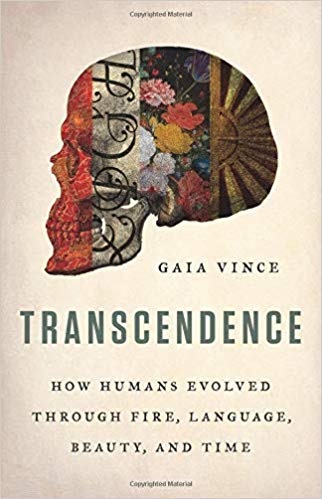
Transcendence: How Humans Evolved Through Fire, Language, Beauty, and Time by Gaia Vince tells the big picture story of human evolution from its beginnings to the present. Unlike most history books that focus on one era, this book has it all. It is based on our best scientific knowledge and focuses on the evolutionary triad of genes, environment, and culture. It provides a perfect framework for anyone who wants to understand where we came from and where we might be heading. It’s like taking a step back from looking at individual trees and seeing the great story of the human forest. I strongly recommend this to scholars and students in and discipline.
Introduction
- Evolution has created a mechanism where a human being can be built from a single cell. We are also formed in a cultural developing bath. We are not like other animals, yet we evolved from the same process. In this book, Gaia set out to understand our exceptional nature and what alchemy created the planet-altering force of nature know as humanity. Enjoy her remarkable evolution story that rests on the relationship between our genes, the environment, and our cultures. The book is organized by the four key agents that have driven our evolution: Fire, Word, Beauty and Time. It is the interweaving of these four threads that created the extraordinary us. She also focuses on the collaboration between disciplines that is responsible for our transcendence.
Genesis
- 1. Conception: Here we have a big picture overview from the big bang to the point where our ancestors left the forests for the savanna. This is a story that all schools should have in the curriculum somewhere.
- 2. Birth: Humans are exceptional because we learn from each other. This makes our culture cumulative. The most complex things chimps do is crack nuts. About 1.8 million years ago Homo Erectus emerged with a much bigger brain than previous humans. Over time variations developed and interbred. Neanderthals were the most common competitors to Homo Sapiens (us). That’s why we still carry Neanderthal genes to this day. Homo Sapiens may have made it as they were a global species. This protected them from climate change and natural disasters like volcanos.
Fire
- 3. Landscaping: Once microorganisms started generating oxygen and forests grew fire could happen. Our muscles use oxygen to ‘burn’ fuel, but they do it slower. Once humans started using fire they became more social, cooperative, and better able to learn from each other. Fire chemically changes food making it easier to digest. Fire also sanitizes food and can serve as a source of warmth and protection at night. Hunting wild animals for food required cooperation and specialization. Older people knew more about hunting while younger people were faster and stronger. The best spear maker was probably not the best spear thrower. When humans figured out how to make fire this allowed them to easily relocate to find larger concentrations of animals for food. As all this played out we evolved an upright posture and grew larger brains. Watch a man making fire here.
- 4. Brain Building: By harnessing fire our brains could grow beyond the limits imposed by biology. Bigger brains also allow for more sociability and cooperation. Bigger brains lead to babies being born much more immature. This required much more care and cooperation as other adults helped with child care. The development of menopause resulted in infertile grandmothers who could help raise children. The only other animals who have menopause are a few whales. Gram for gram the brain uses a lot of energy. It’s only 2% of the body by weight but uses 20% of the energy. Cooking food partially digests food so humans had to spend less time eating and developed a weaker jaw that was better for speaking. Meanwhile, our guts developed a bacteria culture that also helps us digest our food. Unfortunately, today we eat a lot of processed food containing too much sugar, salt, and fat.
- 5. Cultural Levers: As humans formed larger and larger groups the cultures (collective brains) that came with them gave them leverage to innovate and specialize. A huge breakthrough was the invention of pottery, which is what you get when you make something out of clay and expose it to a hot fire over time. With pottery, you can make soup, store food, and transport it. This was a big improvement over skins, baskets, bladders, or boxes.
- As we learned how to make fires hotter we were able to force metals out of their oxidized ores. Copper was first. The discovery of the alloy bronze, a mixture of copper and tin, created a harder metal for making tools, weapons, and nails. Even hotter temperatures allow for the production of iron and the more recent alloy of iron and carbon known as steel.
- Another key practice that became possible as brain size increased was teaching. Changes in the environment also triggered a burst of cultural variation that promoted survival. Complex language evolved along with tools and teaching. Bigger populations also allowed for longer cultural levers.
DrDougGreen.com If you like the summary, buy the book





